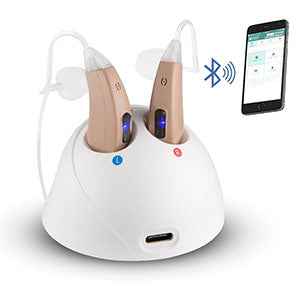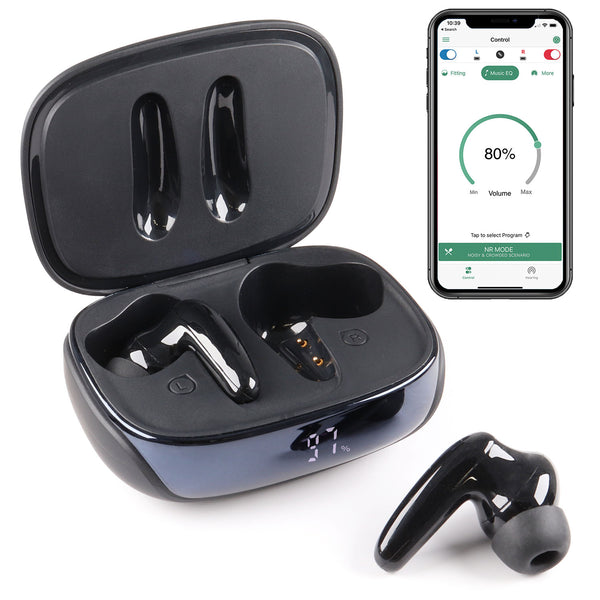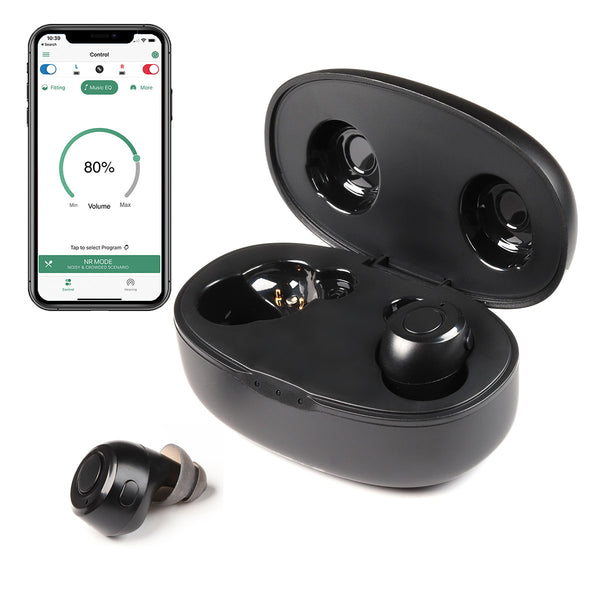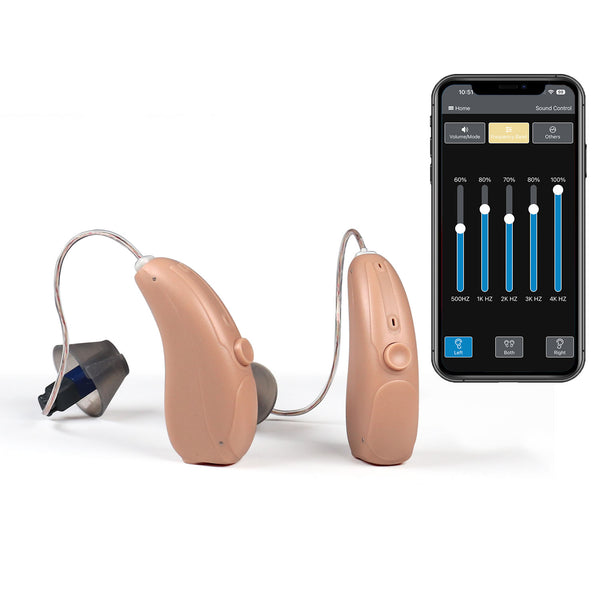
Bluetooth hearing aids: A Quick Look
| Gwen Dunahoe
What is Bluetooth?
In simple terms, Bluetooth is a wireless technology that lets two devices send and receive information from each other across a short distance. This is done through radio frequencies, much like the common radio that we know, or even wi-fi.
This technology is also available in your hearing aids. Bluetooth hearing aids, or wireless hearing aids, are becoming more common. Even AirPods can be used as hearing aids in a pinch, thanks to a new feature that Apple came out with.
Why should I use it?
As mentioned before, Bluetooth is present on nearly every electronic device nowadays. This makes it extremely easy for a user to connect two devices together. This has even extended into medical or health devices, such as hearing aids. The two major phone operating systems, Apple and Android, both offer support for hearing aids that connect through Bluetooth. Here are some benefits of using Bluetooth hearing aids:
You can adjust them yourself
Typically, hearing aids can be extremely expensive. They require a visit to a specialist in order to tune to your specific hearing needs and may require future visits to readjust as your hearing needs change. Bluetooth hearing aids have the major advantage of having a phone app that connects to the device and allows you to adjust the sound to fit their needs without needing to visit a specialist. You can even do things like adjusting the volume in one or both ears or even only use one hearing aid at a time as well as pair to multiple devices and switch on demand.
You can stream audio from your devices directly to your hearing aids
Bluetooth hearing aids’ main strength comes in the ability to stream the audio directly from the device you are paired to. For example, if you are watching a video or listening to a song on your phone, the audio will transmit directly into your hearing aids. Some products may even switch from this mode to a traditional hearing aid mode where it amplifies sound around the user. When it detects audio being played on the device, it will return to streaming mode and transmit audio back into the wireless hearing aids again.
You can make phone calls hands-free
Making phone calls with hearing aids on can be a difficult and frustrating task. It can feel very odd trying to hold the phone up to your ear while the hearing aid is there, and it may make it difficult for the person on the other end of the call to understand you. With Bluetooth hearing aids, you wouldn’t have to worry about those issues. Since you can transmit the call audio directly into your hearing aids, you can focus on speaking without having to place your phone up against a microphone or holding it in unnatural positions.
What are my options if I want to buy?
According to Healthline, Bluetooth hearing aids tend to be quite pricy, averaging anywhere from $1500 - $7500 for a pair. Phonak Naida and Oticon More are two types of Bluetooth hearing aids that fall in this price point.
However, there are makers, such as Smart Hearing Aid, that can provide hearing solutions for a fraction of the price. This is because they are preprogrammed for customers. This means that you don’t have to make an appointment to get a hearing test and meet with a specialist to get your device adjusted. In addition, Bluetooth traditionally uses a lot of power in order to function. However, Smart Hearing Aid offers rechargeable solutions and eliminates the hassle and continued cost of replacing small, hard to install batteries.
Devices such as the MX-SMART even come with an app that pairs to your phone and allows you to perform a test over the phone in order to intelligently adjust the settings on the hearing aid on demand.
Final Thoughts
For all its benefits, Bluetooth does have one limiting factor. This is the fact that Bluetooth tends to drain a lot of power in order to work. However, the easiest solution to that is the use of rechargeable batteries in hearing aids. Not only can you charge devices either at home or on the go, you no longer need to deal with the hassle of taking out and putting in those small batteries.
Bluetooth hearing aids are the beginning of a continued partnership between technology and medical devices. Bluetooth was first announced to the public in the form of a wireless headset in 1999 and now it is present in so many devices. There has never been a better time to switch from traditional hearing aids to Bluetooth ones.
The price may be a bit steep, but there are cheaper alternatives that work just as well from smaller companies that strive for quality, reliable products. This way, you can receive all the benefits of Bluetooth and hearing aids without breaking the bank.



